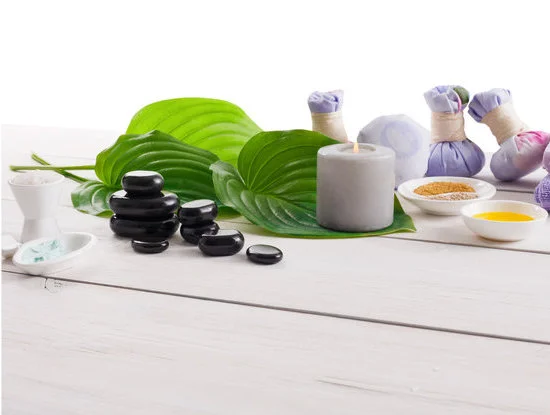Aromatherapy candles have become increasingly popular in recent years as a tool for relaxation and wellbeing. These specialized candles are infused with essential oils that release pleasant scents when lit, creating an atmosphere that promotes a sense of calm and serenity. But what exactly do aromatherapy candles do, and how can they enhance our overall wellbeing?
Aromatherapy candles are designed with the intention of improving our mental, emotional, and even physical health through the power of scent. The concept behind these candles is rooted in ancient practices that recognized the therapeutic effects of aromatic plants and their oils. Essential oils, extracted from various plants and flowers, are infused into the wax of these candles to release their natural fragrances when burned.
The use of essential oils in aromatherapy candles can have multiple benefits. Different scents evoke different responses in our brain and nervous system, influencing our emotions and overall state of mind. Some essential oils are known for their calming properties, helping to reduce stress and anxiety. Others can promote better sleep quality or alleviate symptoms of headache or congestion. By harnessing the power of scent, aromatherapy candles have the potential to improve our wellbeing on various levels.
History of Aromatherapy and Candles
The history of aromatherapy and candles is rooted in ancient civilizations and has evolved over time to become popular in modern wellness practices. This section will delve into the origins of aromatherapy and its connection to ancient cultures, as well as trace the development of candles being incorporated into aromatherapy practices throughout history.
Ancient Origins of Aromatherapy
Aromatherapy is the use of essential oils derived from plants for therapeutic purposes, and its origins can be traced back thousands of years. The practice of using plant extracts for healing and relaxation dates back to ancient civilizations such as Egypt, China, India, and Greece. These cultures recognized the power of scents to improve mental and physical well-being.
In Egypt, aromatic herbs and resins were used in religious ceremonies and embalming rituals. Ancient Chinese texts documented the use of aromatic plants for their medicinal properties and believed that fragrant substances could balance the body’s energy flow. Indian Ayurveda also incorporated aromatic herbs into their healing practices, while Greek physicians like Hippocrates explored the benefits of herbal essences for various ailments.
The Evolution of Candles in Aromatherapy
Candles have long been used as a source of light but their role expanded beyond mere illumination with the incorporation of essential oils. The Ancient Egyptians are credited with creating some of the earliest candles by soaking reeds or papyrus strips in animal fats which acted as a wick. These early versions provided both light and fragrance when burned.
Over time, candle-making techniques spread across different cultures, with new materials such as beeswax being utilized as a cleaner and more sustainable alternative to animal fat. In the Middle Ages, candles scented with herbs or flowers were commonly used during religious ceremonies. However, it wasn’t until modern times that candles began to be specifically marketed for their aromatherapy benefits.
Today, aromatherapy candles are crafted using natural waxes, such as soy or beeswax, and infused with carefully selected essential oils. This allows people to enjoy the soothing scents and therapeutic benefits of aromatherapy in a safe and convenient manner. The combination of candles and aromatherapy has become a popular choice for individuals seeking relaxation, stress relief, and overall well-being.
The history of aromatherapy and candles reveals how humans have long recognized the power of scent for its therapeutic effects. From ancient civilizations to modern practices, individuals have sought out the benefits of aromatherapy to enhance their physical, emotional, and spiritual well-being. As we continue to integrate this practice into our lives today, we can appreciate the rich history that has paved the way for the use of aromatherapy candles as a tool for relaxation and self-care.
The Science Behind Aromatherapy Candles
Aromatherapy has been used for centuries as a holistic healing practice, and one of the key components of this practice is the use of essential oils. In the context of aromatherapy candles, these essential oils are infused into the wax and released into the air when the candle is burned. But what exactly is the science behind how these scents affect our brain and emotions?
When we inhale certain scents, they have a direct pathway to our brain through the olfactory system. The olfactory system is responsible for our sense of smell, and it connects directly to an area in our brain called the limbic system. The limbic system is closely linked to emotions, memory, behavior, and even physiological responses like heart rate and blood pressure.
Different scents can trigger different emotional and physiological responses based on how they interact with receptors in our olfactory system. For example, lavender essential oil has been shown to promote relaxation and reduce anxiety when inhaled. This is because it interacts with receptors that stimulate a calming response in the brain.
In addition to lavender, there are many other essential oils commonly used in aromatherapy candles that offer specific benefits. For example, peppermint essential oil can help with focus and concentration, while eucalyptus essential oil can aid in relieving congestion. Each essential oil has its own unique properties that make it beneficial for different purposes.
Scientific studies have supported the effectiveness of aromatherapy in various contexts. For example, a study published in the Journal of Clinical Nursing found that patients who received aromatherapy treatments reported decreased levels of stress and anxiety compared to those who did not receive treatment. Another study published in Frontiers in Psychology showed that inhaling certain essential oils can lead to changes in brain activity associated with mood regulation.
Benefits of Aromatherapy Candles
Aromatherapy candles offer a wide range of benefits that can enhance wellbeing and promote relaxation. The use of essential oils in these candles allows for the release of therapeutic scents that can positively impact our emotions, mood, and overall mental state. Here are some key benefits provided by aromatherapy candles:
- Stress Relief: Aromatherapy candles are known for their ability to reduce stress and anxiety levels. Scents like lavender, chamomile, and bergamot have calming properties that help to alleviate tension and promote relaxation. Lighting an aromatherapy candle with these scents can create a soothing environment that helps to calm the mind and unwind after a long day.
- Improved Sleep: Many individuals struggle with sleep issues such as insomnia or difficulty falling asleep. Aromatherapy candles can be an effective aid in promoting a restful night’s sleep. Scents like lavender, vetiver, and cedarwood have sedative properties that can induce feelings of calmness and tranquility, preparing the mind and body for sleep.
- Mood Enhancement: Different essential oils used in aromatherapy candles can uplift the mood and improve overall emotional wellbeing. Citrus scents like lemon, orange, or grapefruit are known to boost energy levels and promote a positive outlook. On the other hand, floral scents such as rose or jasmine have antidepressant properties that can help relieve symptoms of mild depression or low moods.
To fully experience the benefits of aromatherapy candles, it is essential to select the appropriate scent based on individual preferences and desired effects. Some individuals may find certain scents more relaxing than others, while others may prefer invigorating or uplifting scents depending on their needs at any given time.
When choosing an aromatherapy candle, it is also crucial to consider the quality of ingredients used in its production. Opting for natural ingredients ensures optimal results without exposure to synthetic fragrances or harmful chemicals. Additionally, individuals with allergies or sensitivities should be cautious when selecting essential oils to avoid any adverse reactions.
Incorporating aromatherapy candles into daily life can be done in various ways. Besides simply lighting a candle during relaxation time, these candles can be utilized during meditation, yoga practice, or before bed to enhance the overall experience. The soft glow and soothing scents create a calming ambiance that aids in promoting relaxation and focus.
Choosing the Right Aromatherapy Candle for Your Needs
When it comes to selecting the perfect aromatherapy candle, there are a few factors to consider that can make a difference in achieving the desired effects and benefits. With a wide array of scents available, it’s important to choose one that aligns with your individual preferences and specific needs. Here are some tips to help you find the right aromatherapy candle:
- Identify your desired effects: Before choosing an aromatherapy candle, think about what you hope to gain from using it. Are you looking for stress relief, relaxation, or better sleep? Different essential oils have unique properties that target specific issues. For example, lavender is known for its calming and soothing effects, while eucalyptus can help with congestion and headaches.
- Consider personal preferences: Since everyone has different scent preferences, it’s important to choose an aroma that you find pleasing and enjoyable. Whether you prefer floral notes like rose or jasmine, or prefer something more earthy like sandalwood or patchouli, there are countless options available to suit every taste.
- Quality matters: Opt for high-quality aromatherapy candles made with natural ingredients for optimal results. Look for candles made with pure essential oils and natural waxes like soy or beeswax. Avoid candles that contain synthetic fragrances or additives as they may not provide the same therapeutic benefits.
- Be mindful of allergies: If you have any allergies or sensitivities to certain scents or essential oils, it’s important to read the labels carefully before purchasing an aromatherapy candle. Some individuals may be sensitive to particular essential oils like citrus oils which can cause skin sensitivity or respiratory issues in certain individuals.
By considering these factors when choosing an aromatherapy candle, you can ensure that you select one perfectly suited to your needs and preferences. Remember that experimentation is key – don’t be afraid to try different scents and see which ones resonate with you the most. The right aromatherapy candle can enhance your overall wellbeing and contribute to a more balanced and serene lifestyle.
How to Use Aromatherapy Candles
Aromatherapy candles offer a variety of benefits for improving wellbeing and relaxation. But how exactly should one use these candles to experience their full potential? In this section, we will explore the proper usage and safety guidelines for aromatherapy candles, as well as different methods of enjoying their benefits.
When using aromatherapy candles, it is important to follow certain safety precautions. First and foremost, never leave a burning candle unattended. Always make sure to extinguish the flame before leaving the room or going to sleep. Additionally, keep the candle away from flammable materials and ensure that it is placed on a stable surface.
To fully experience the benefits of aromatherapy candles, consider incorporating them into specific activities or moments throughout your day. Many people find that lighting an aromatherapy candle during meditation can enhance relaxation and deepen mindfulness practice. The subtle scent can help create a calming atmosphere and promote focus.
Another great way to use aromatherapy candles is during bath time. Set the mood by dimming the lights, playing soft music, and lighting your preferred candle scent. This can transform your bathing experience into a luxurious spa-like retreat, promoting both physical and mental relaxation.
Lastly, using aromatherapy candles before bed can help create a soothing ambiance that promotes better sleep. Light a candle about 30 minutes before retiring to bed and allow its gentle aroma to fill your space. The scent of lavender or chamomile is particularly known for its calming properties which can aid in improving sleep quality.
By following these guidelines and finding ways to incorporate aromatherapy candles into your daily routine, you can enjoy their numerous benefits for enhanced wellbeing and relaxation.
| Usage Tips | Safety Guidelines |
|---|---|
| – Use during meditation | – Never leave burning candle unattended |
| – Enjoy during bath time | – Keep away from flammable materials |
| – Use before bed for better sleep | – Place on a stable surface |
DIY Aromatherapy Candles
Creating your own personalized aromatherapy candles can be a rewarding and enjoyable experience. Not only do you have the opportunity to customize the scent, but you can also control the quality of ingredients used. Making DIY aromatherapy candles allows you to fully embrace the therapeutic benefits of essential oils and create a unique aroma that suits your preferences and needs.
To make your own aromatherapy candles, you will need a few key materials. First, choose a natural wax such as soy wax or beeswax, which are eco-friendly options that burn clean. Next, select your desired essential oils based on their therapeutic properties and scent profiles. Popular choices include lavender for relaxation, peppermint for energy and focus, and eucalyptus for congestion relief. Additionally, gather candle jars or containers, wicks, and any desired colorants or decorative elements.
Begin by melting the wax in a double boiler or using a microwave-safe container in short intervals until fully melted. Once melted, remove from heat and let cool slightly before adding your chosen essential oils. The general guideline is to use about 30 drops of essential oil per 8 ounces of melted wax, but this can be adjusted based on personal preference and desired strength of scent.
Before pouring the wax into your containers, place the wick in the center and secure it using a wick holder or by tying it around a pencil resting atop the container opening. Slowly pour the scented wax into the containers, being careful not to disturb the wick. Allow the candles to cool completely before trimming the wick to about half an inch.
One of the benefits of making your own aromatherapy candles is that you can experiment with different scents and combinations to create personalized aromas that promote specific wellness goals or moods. For example, combining lavender with chamomile can enhance relaxation for bedtime rituals while blending citrus oils like grapefruit and bergamot can boost mood and energy levels.
By making your own aromatherapy candles, you gain control over the quality of ingredients used and can create unique scents tailored to your preferences. Whether you prefer a floral aroma to uplift your spirits or a grounding woody scent to promote relaxation, DIY aromatherapy candles offer a creative and customizable approach to enhancing your wellbeing.
Integrating Aromatherapy Candles into Daily Life and Wellness Routine
Aromatherapy candles can be a wonderful addition to your daily life and wellness routine, providing a sense of relaxation and balance. Here are some creative ways to incorporate aromatherapy candles into your daily self-care practices.
Creating a Serene Atmosphere for Meditation:
Meditation is a powerful practice that helps calm the mind and promote inner peace. By incorporating aromatherapy candles into your meditation routine, you can enhance the overall experience. Before starting your meditation session, light an aromatherapy candle with a scent that promotes relaxation and focus, such as lavender or sandalwood.
Place the candle near your meditation space, allowing the soothing aroma to fill the air. As you breathe deeply and settle into your practice, allow the calming scent to help center your thoughts and deepening your mindfulness.
Enhancing Bath Time Relaxation:
Aromatherapy candles can transform an ordinary bath into a luxurious spa-like experience. The soft glow of candlelight combined with the soothing scent of essential oils creates an atmosphere of tranquility. Before stepping into the bath, light a few aromatherapy candles around the room to create a warm ambiance.
Choose scents like chamomile or eucalyptus for their stress-relieving properties or go for something more uplifting like citrus or peppermint if you need an energy boost. Relax in the warm water and let the gentle flicker of the candles along with their delightful aroma envelop you in serenity.
Promoting Restful Sleep:
Quality sleep is essential for overall health and wellbeing. Aromatherapy candles can help create a bedtime ritual that signals to your body that it’s time to relax and unwind. About 30 minutes before going to bed, light an aromatherapy candle with relaxing scents like lavender or chamomile in your bedroom.
Take some time to read, practice restorative yoga, or indulge in a calming activity. The gentle aroma from the candle will help calm your mind and prepare your body for a restful night’s sleep. Blow out the candle before getting into bed to ensure safety.
Integrating aromatherapy candles into your daily life and wellness routine is about taking small steps to prioritize self-care and create moments of tranquility amidst a busy schedule. Whether it’s during meditation, bath time, or before bed, these candles can enhance your wellbeing by promoting relaxation, reducing stress, and improving overall mood.
Experiment with different scents and find the ones that resonate with you the most. As you incorporate aromatherapy candles into your routine, notice how they contribute to a more balanced and serene lifestyle.
Conclusion
In conclusion, aromatherapy candles possess a powerful ability to enhance wellbeing and promote relaxation. Throughout history, these candles have been used in conjunction with essential oils to provide various benefits such as stress relief, improved sleep, and targeted relief for specific issues like anxiety or congestion. The science behind aromatherapy reveals how scent affects our brain and emotions, supporting the effectiveness of these candles in creating a soothing ambiance and promoting a sense of calm.
When choosing an aromatherapy candle, it is important to consider individual preferences and desired effects. Selecting scents that resonate with you personally can help maximize the benefits of aromatherapy candles. Additionally, opting for quality candles made with natural ingredients ensures optimal results and eliminates potential sensitivities or allergies to certain essential oils.
Integrating aromatherapy candles into daily life and wellness routines can greatly contribute to an overall balanced and serene lifestyle. By incorporating these candles into activities such as meditation, bath time, or before bed, individuals can enhance their self-care practices and promote mindfulness. Aromatherapy candles also complement other wellness activities like yoga or journaling by creating an environment conducive to relaxation.
Frequently Asked Questions
What is the difference between aromatherapy candles and regular candles?
The difference between aromatherapy candles and regular candles lies in the ingredients used to create them. Aromatherapy candles are specifically designed to release fragrance when burned, typically using essential oils or natural plant extracts.
These scents can have various therapeutic properties and are believed to promote relaxation, stress relief, or even boost energy levels. On the other hand, regular candles are primarily made of wax and may include artificial fragrances that simply add a pleasant smell to the room without any specific therapeutic benefits.
What are the benefits of aromatherapy?
Aromatherapy offers several potential benefits for both physical and mental well-being. One of the primary advantages is its ability to promote relaxation and reduce stress levels. Certain scents like lavender, chamomile, or ylang-ylang are thought to have calming effects that aid in reducing anxiety and improving sleep quality.
Aromatherapy may also help alleviate certain physical symptoms such as headaches or muscle tension through the use of targeted essential oils. Additionally, it can enhance mood, uplift spirits, improve focus, and even serve as a natural air freshener.
Is aromatherapy better than candles?
It’s not accurate to say that aromatherapy is better than candles because they serve different purposes. Aromatherapy involves the deliberate use of scents from essential oils and plant extracts for therapeutic benefits, whereas candles usually aim for ambiance or gentle illumination rather than actively promoting well-being.
While some regular candles may emit pleasing fragrances into a space, they don’t necessarily possess the same therapeutic qualities found in aromatherapy candles with carefully selected essential oil blends. Therefore, whether one is considered better than the other largely depends on individual preferences or needs – aroma-focused therapy versus aesthetic appeal or lighting purposes alone.

Are you looking for a natural way to improve your health and wellbeing?
If so, aromatherapy may be the answer for you.





